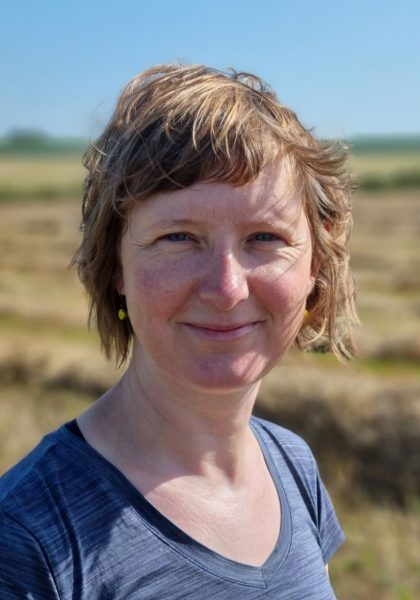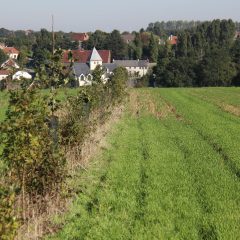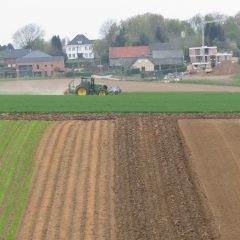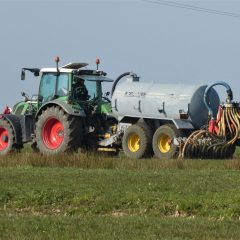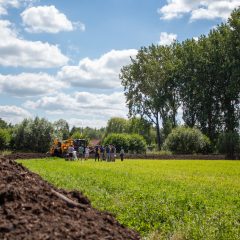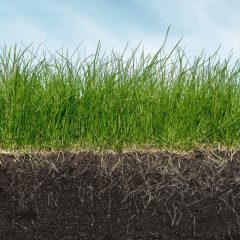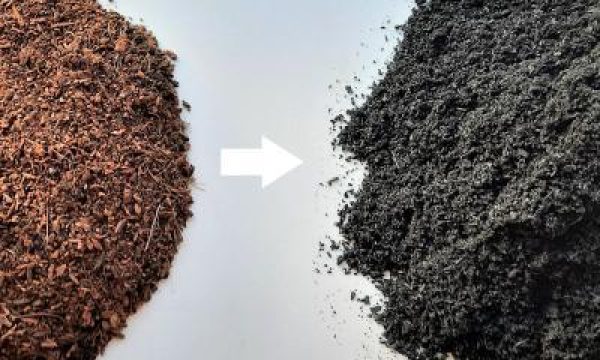Dossier Soil health
Healthy soils are as important to life on earth as clean air and water. Healthy soils not only lead to healthy and productive crops, they also provide numerous additional ecosystem services such as climate regulation, richer below- and above-ground biodiversity, better water management, etc.
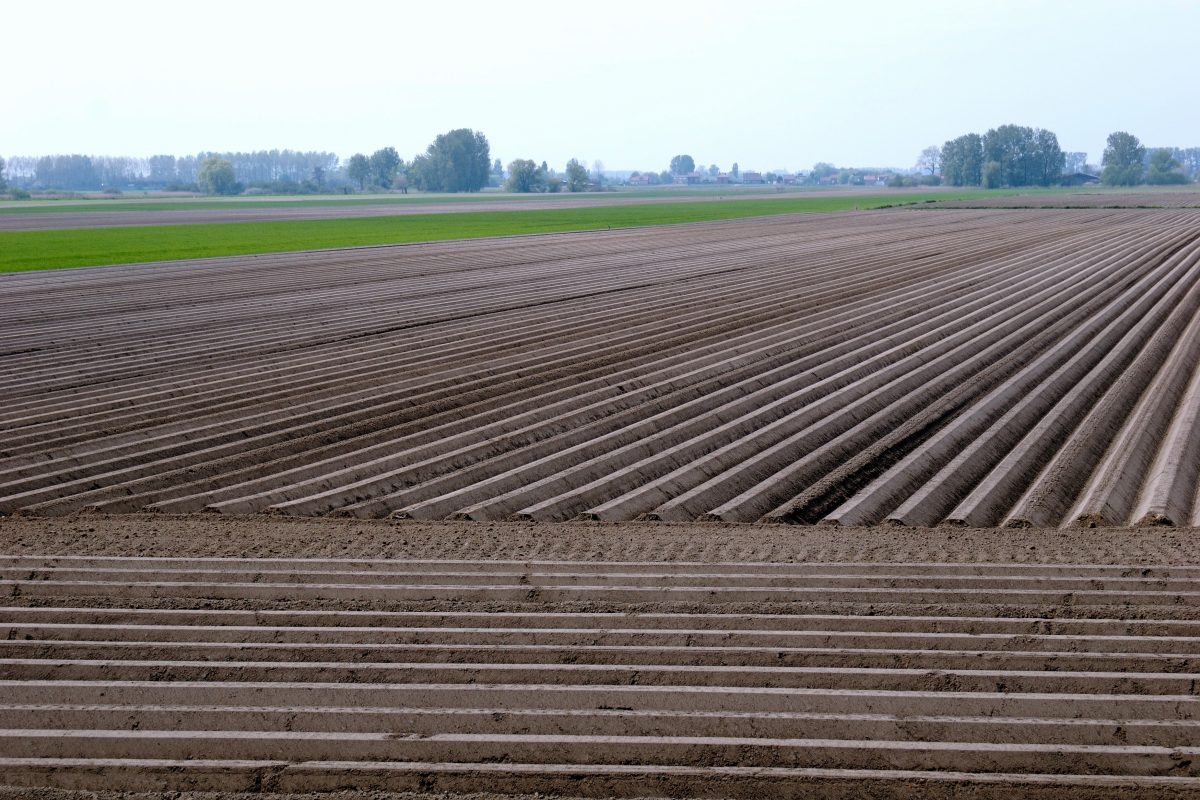
What does ILVO do?
-
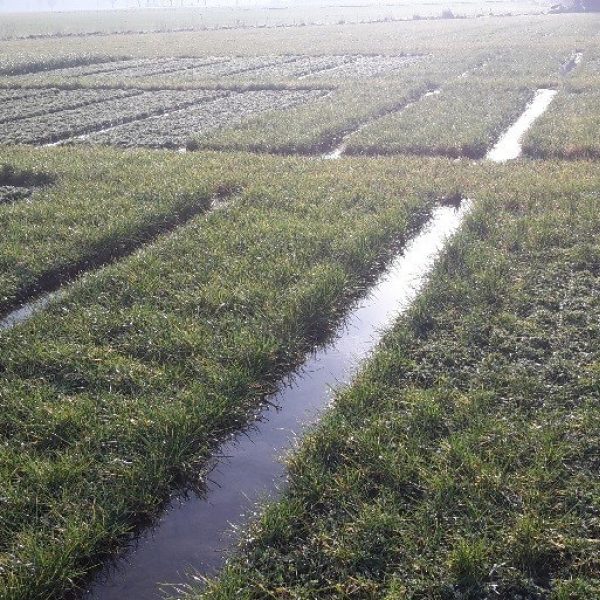 ILVO investigates which cultivation techniques promote soil health and how these techniques can be incorporated into the cultivation system.
ILVO investigates which cultivation techniques promote soil health and how these techniques can be incorporated into the cultivation system. -
 ILVO is committed to the circular use of organic residue streams from farms and nature reserves in function of soil quality.
ILVO is committed to the circular use of organic residue streams from farms and nature reserves in function of soil quality. -
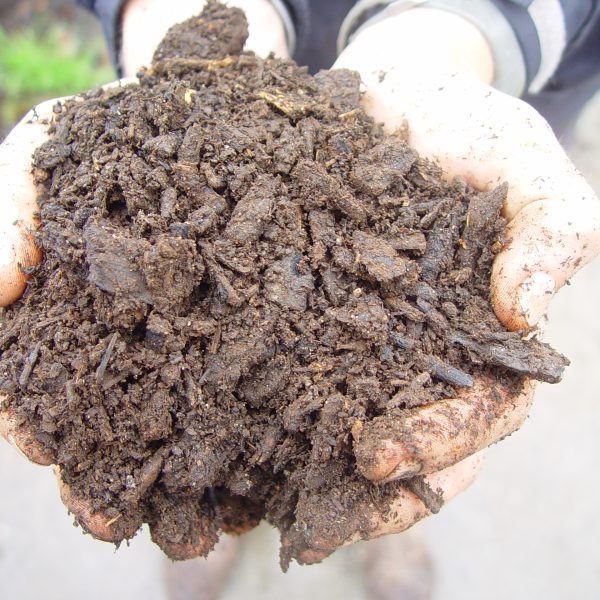 ILVO is always looking for suitable methods and indicators to measure soil quality and life, incl. DNA and RNA based techniques.
ILVO is always looking for suitable methods and indicators to measure soil quality and life, incl. DNA and RNA based techniques. -
 ILVO investigates the impact of measures on carbon storage and how carbon storage can be modeled, monitored and remunerated.
ILVO investigates the impact of measures on carbon storage and how carbon storage can be modeled, monitored and remunerated. -
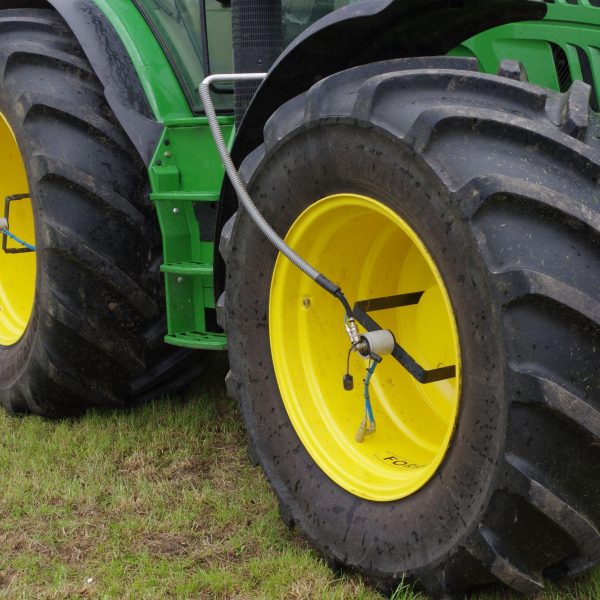 ILVO investigates together with farmers how soil compaction and erosion can be avoided and disturbing compacted layers lifted.
ILVO investigates together with farmers how soil compaction and erosion can be avoided and disturbing compacted layers lifted.
What is soil health?
A healthy soil has the ability to function as a living ecosystem and sustain plants, animals and people. The term soil health emphasizes the role of soils in the One Health principle and shows that the health of soils is closely related to the health of people, plants, animals and ecosystems.
A (healthy) soil provides numerous ecosystem services:
Production of food, feed and raw materials
Storing carbon (climate mitigation)
Infiltration of water during heavy rainfall (climate adaptation)
Buffering water against drought (climate adaptation)
Retention and release of nutrients
Hosting soil biodiversity and its associated functions
Soils and climate
Soils can help combat climate change by capturing CO2 (via crops) from the air and storing it as carbon. Globally, there is three times as much carbon in soils as in the atmosphere. To combat climate change, we must ensure that this carbon remains stored in soils. In addition, we need to better utilize the potential to store carbon in many of our agricultural soils.
With climate change, agriculture is experiencing both increased drought and flooding problems. Healthy soils, on the one hand, store more water and allow good rooting, so plants are less likely to suffer from drought. Healthy soils, on the other hand, are also more resilient to flooding because they have stronger soil crumbs that are less likely to loosen and wash off, and because they allow water to infiltrate better.
In other words, both in the fight against climate change and in our protection against its effects, healthy soils play a crucial role.
Soil biodiversity
Soil is bursting with life. All of the organisms living in the soil account for some 25% of the planet's total biodiversity.
Together, this 'soil life' is responsible for countless functions:
- Keeping plant diseases and pests under control
- Recycling organic matter into plant nutrients
- Associating with plant roots (e.g. with soy)
- Improving soil structure with positive effects on aeration
- Retaining water and nutrients
- Better plant production that is less dependent on inputs such as (artificial) fertilizer
For a long time, knowledge about soil biodiversity remained limited. Thanks to new DNA and RNA-based techniques, we are now better able to map soil biodiversity and are little by little beginning to understand its functions, complex interactions with each other and interactions with plant roots.
> More info about these DNA and RNA techniques: www.ilvogenomics.be.
Compaction and erosion
Agricultural soils are under pressure. Low crop diversity, heavy machinery, harvesting in wet conditions and decreasing soil organic matter levels result in more soil compaction and greater susceptibility to erosion. Together with farmers, ILVO is looking for ways to avoid problems of erosion and compaction and to eliminate disturbing compacted soil layers in a sustainable way.
How can we keep soil healthy?
Adding organic material
Soil organic (carbon) matter and soil life are the engine of a healthy soil. This engine is kept running by adding stable organic matter such as farmyard manure and compost, but roots, root exudates, green cover crop residues and crop residues such as straw also contribute significantly. It is therefore important to leave soils fallow as little as possible.
Crop rotation and -diversity
A greater diversity of crops and green cover crops will also benefit the diversity of soil life. Early maturing crops and varieties can usually be harvested in better conditions leading to less compaction and better developed green cover afterwards. In turn, intensively rooting and deep-rooting crops contribute to good soil structure.
Smart fertilization and pH management
Keeping pH optimal by liming on time is a simple but necessary measure, as is keeping an eye on optimal nutrient balances without over-fertilizing.
Smart management
Working in sufficiently dry conditions, with less heavy machinery and reduced tire pressure helps to avoid soil compaction. Less intensive and shallower tillage also saves the soil.
How can we measure soil health?
Measuring soil quality traditionally involves working with chemical, physical, and biological indicators. These indicators are often correlated with each other. Some soil indicators, such as the biological indicators, are highly variable over time, and most soil characteristics, such as physical indicators, can also show great variability within a plot. This makes it difficult to measure soil health and recommend appropriate soil management.
In recent years, a range of innovative measurement techniques such as high-throughput sequencing, soil scans, sensors and remote sensing have become available that can directly or indirectly tell us more about soil health. The question is how we can connect these both traditional and more novel methods intelligently in function of a data-driven sustainable soil management.
ILVO works together with the Department of Agriculture & Fisheries to open up soil data via a soil passport.
Healthy soil as part of the system
The farmer determines which crops and green cover crops are grown and makes choices related to fertilization, tillage and crop protection. However, farmers work in a particular socio-economic context and are influenced by numerous actors such as policy, suppliers and buyers, research and extension services, and consumers. Within this system, the question is how working on healthy soils and providing ecosystem services such as carbon storage and water storage can be a business model for the farmer.
> Also read these dossiers:
Contact an expert
